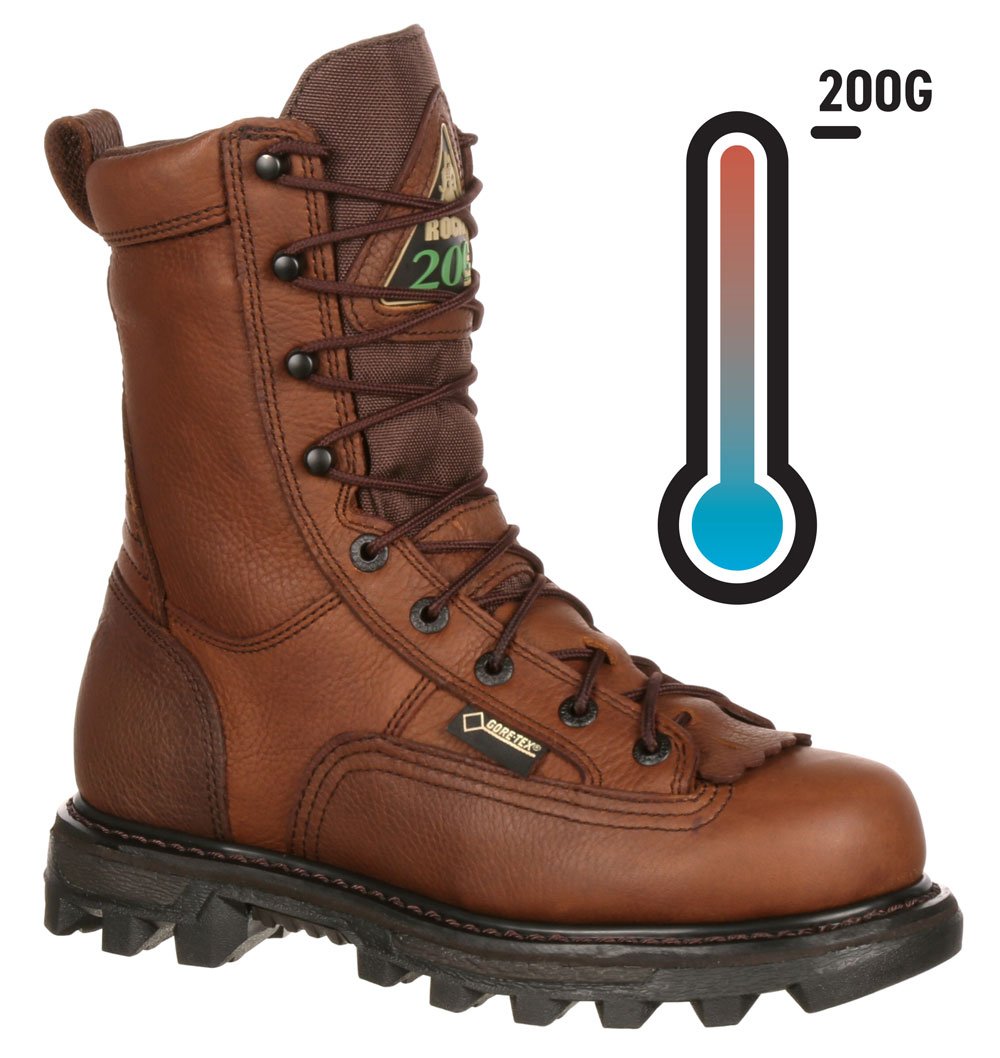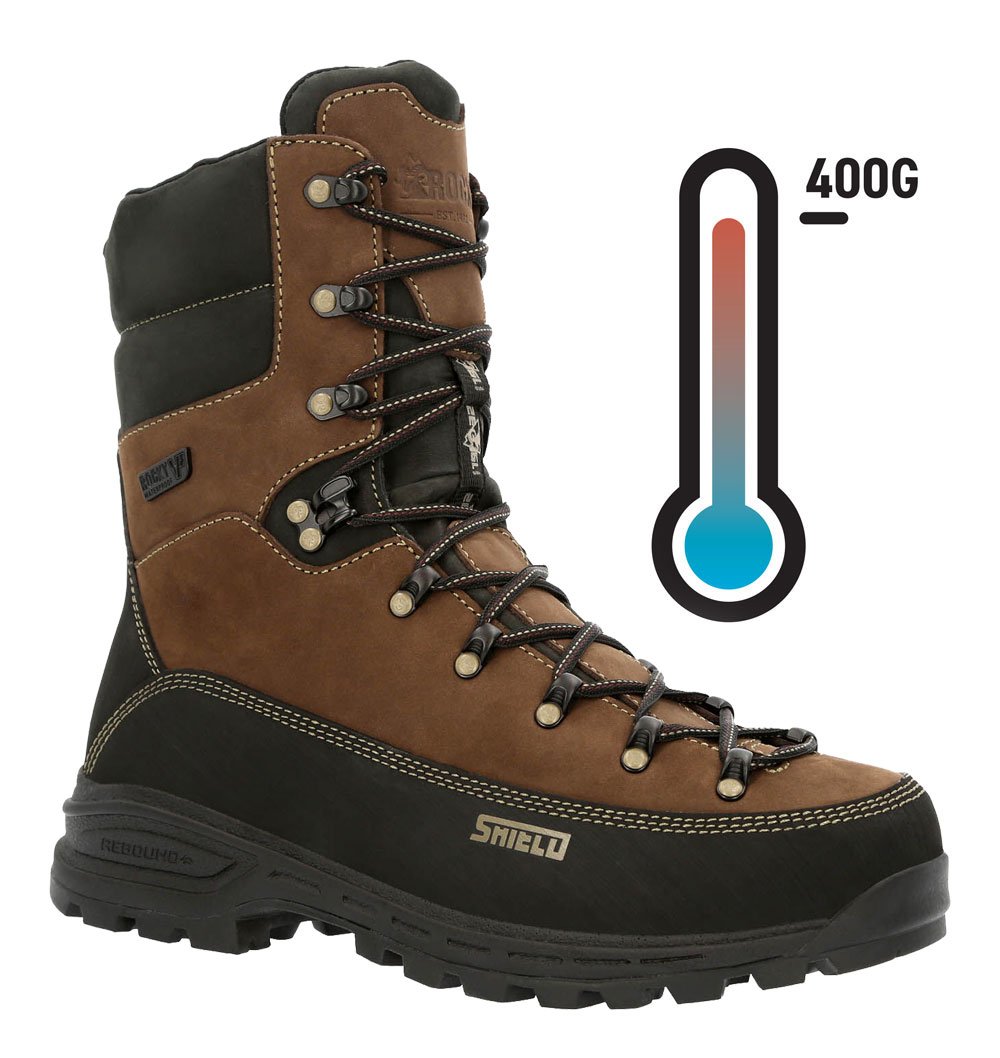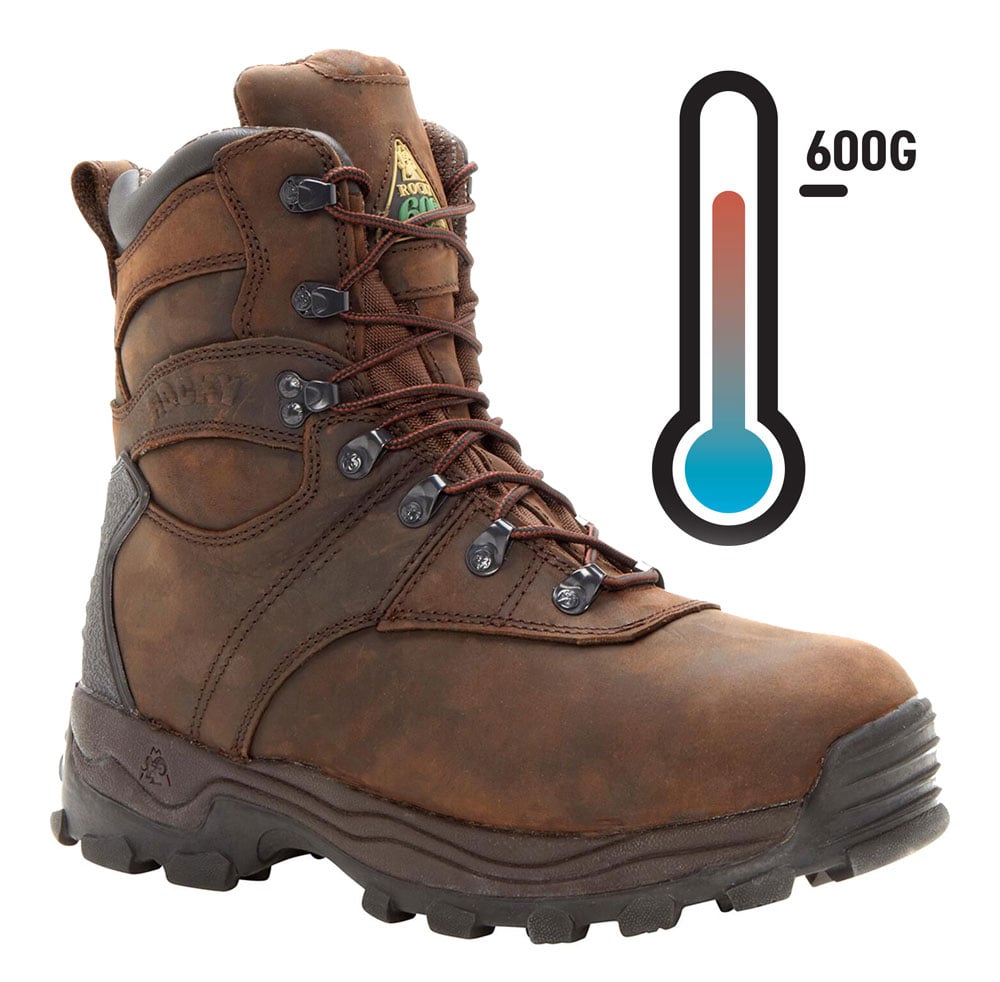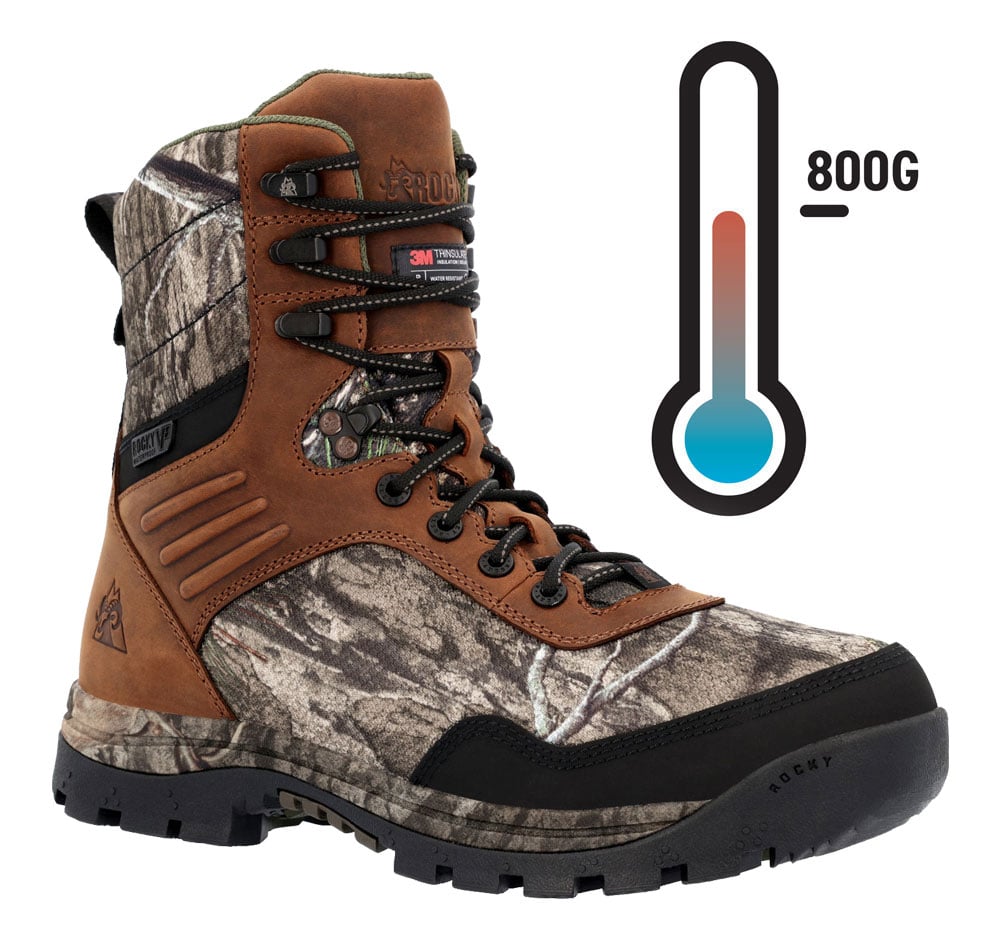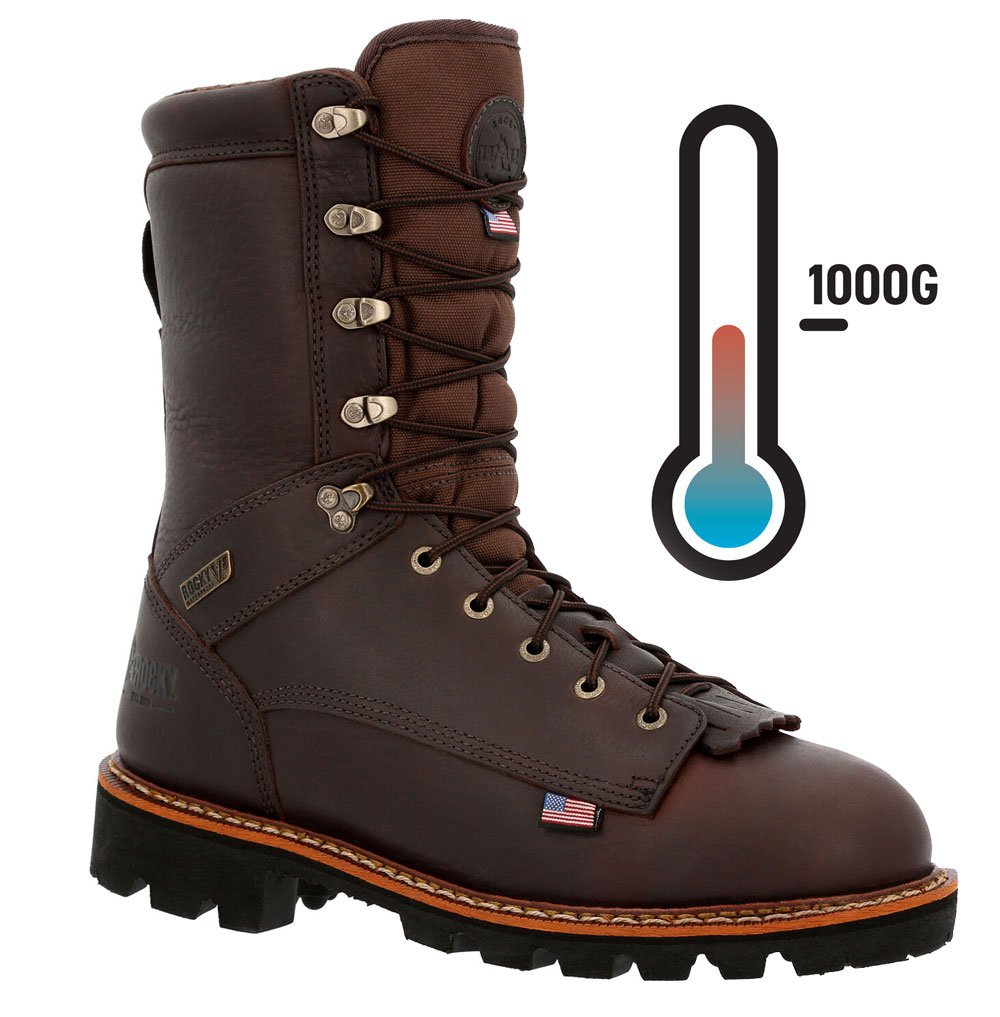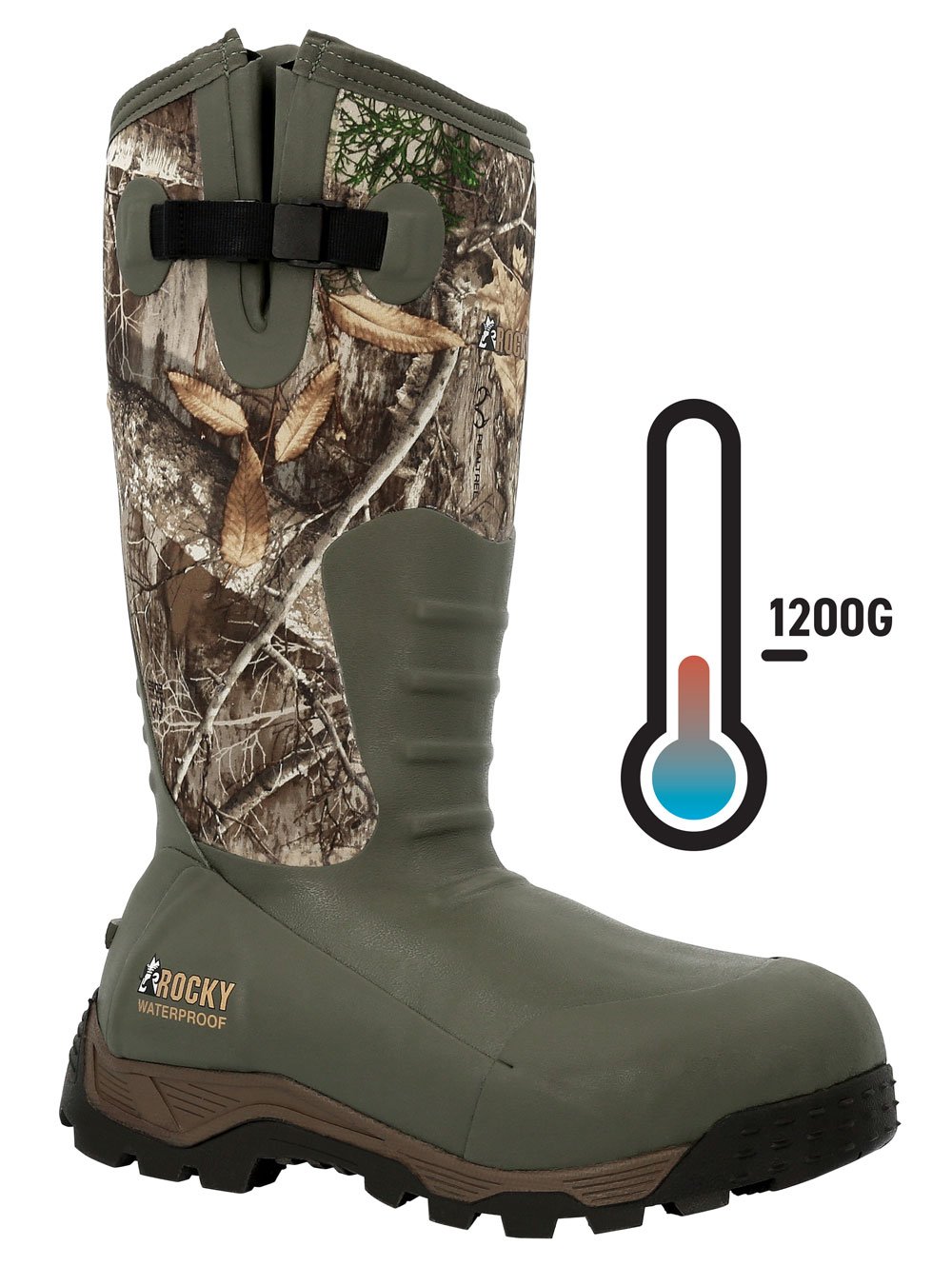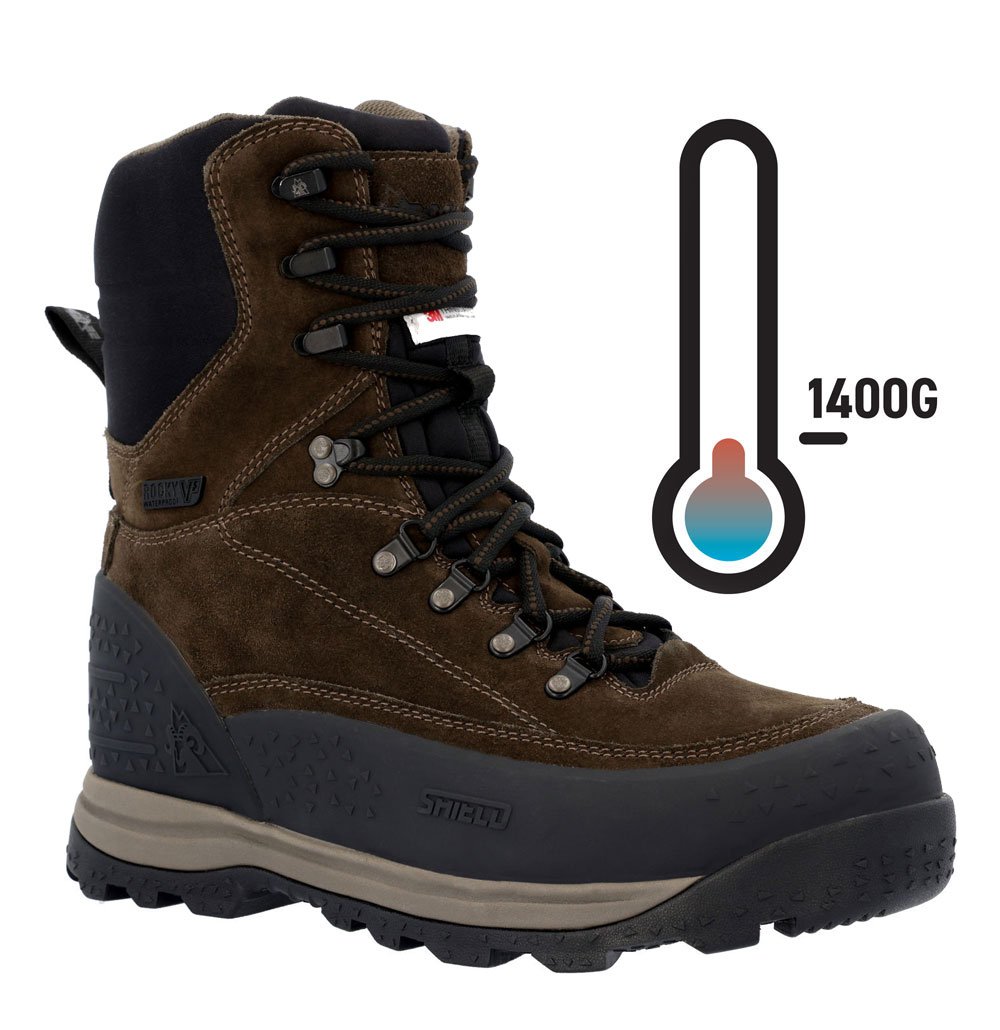FREE SHIPPING & RETURNS ON CONTIGUOUS U.S. $75+ ORDERS

February 19, 2020 | Written by Rocky Staff | Apparel
Do I Need Insulated Boots?
The first question you might ask is if you actually need a pair of insulated boots. When you work or spend time outdoors in below-freezing conditions then the answer will almost certainly be yes. While the answer to that question in the freezing weather or snow might be an easy one, it can be a bit harder to answer when the weather is chilly but not approaching freezing. If that is the case, there are a few things to consider. Do you have poor circulation or find yourself colder than others around you? Could the temperature drop while you're wearing your boots? Are you going to mostly be wearing your boots during mild weather but could need them during colder months as well? If the answer is yes to any of these questions you should consider getting a pair of insulated boots. If not, a pair of waterproof boots may be a better fit.
What Are Insulated Boots Made From?
At Rocky Boots, we build each of our products with high-quality materials that don't disappoint. That's why we use premium insulating technology like 3M™ Thinsulate™ Insulation in our boots and Prima-Loft® Insulation in accessories and apparel. 3M™ Thinsulate™ is a thermal insulation made from synthetic fibers that are warmer than the same amount of any natural material could be. Its thermal properties still work when wet, making it a great option for our outdoor boots and work boots.
How Much Insulation Do I Need in My Boots?
When deciding how much insulation you need in your boots there are a lot of things to consider. On top of the temperature you will be wearing them in, you also need to consider other environmental factors like snow, ice, or water. You also need to consider how active you are going to be while wearing insulated boots and the thickness of your socks.
The insulation in our boots is measured in grams, the actual weight of the insulating material they contain. You may see a pair of boots with 400 grams of insulation and assume that they will be twice as warm as boots with 200 grams, but that is not the case. While they will certainly be warmer, insulation does not exactly work this way. Providing specific temperatures for each insulation weight is not possible due to the variety of factors you need to consider, but the guide below will help you decide which insulated boots are right for you.
200G Insulated Boots
Boots with 200 grams of insulation are great for cool weather at lower activity levels but can work in colder weather if you are going to be continuously active. This weight shouldn't cause you to overheat if the temperature rises which make them a good option for milder climates where you would sometimes be exposed to cooler conditions.
400G Insulated Boots
A pair of boots featuring 400 grams of insulation is good for cooler weather at low activity levels and can keep you warm in fairly cold weather if you are active while wearing them. If you find that 200 grams aren't quite warm enough, you should consider bumping up to 400 grams.
600G Insulated Boots
Moving up to a pair of 600 gram insulated boots will keep you warm in cold weather at low to moderate levels of activity. When the temperature starts to drop, you can comfortable use 600 gram boots at higher activity levels.
800G Insulated Boots
In colder weather 800 gram insulated boots will keep you warm at low to moderate activity levels. 800 grams is typicallythe heaviest amount of insulation you will want in your boots if you will be moving non-stop unless you are going to be in truly frigid environments or moving through cold water or snow. 800g boots are a popular choice for whitetail deer and deer stand hunters.
1000G Insulated Boots
Boots with 1000 grams of insulation will be good for keeping you warm in really cold conditions at low to moderate activity levels. If you are going to be moving through snow or have your feet submerged in cold water, you may want to consider boots with 1000 grams of insulation or more.
1200G Insulated Boots
When you're dealing with the coldest of environments, choose boots with 1200 or more grams of insulation. Pick a pair of 1200 gram insulated rubber boots when moving through cold or even icy water. Rubber boots with 1000-1200 grams of insulation are great for snow and the person not concerned with the breathability of their boots.
1400G Insulated Boots
In the coldest of environments where you need as much warmth as you can get, turn to our 1400 gram insulated boots.
What Kind of Socks Should I Wear with Insulated Boots?
When wearing insulated boots you should always wear merino wool socks or some sort of wool composite or blended moisture-wicking material. While waterproof insulated boots are good at keeping the cold and moisture out of your boots, they can also hold moisture in if your feet begin to sweat or if snow gets down into your boots. Merino wool is naturally moisture-wicking and breathable, which will pull moisture off your feet and allow it to escape through your boots more easily. In comparison, regular cotton socks on their own will hold moisture and lower the temperature of your feet if you are in the cold long enough. Merino wool socks and other comparable socks are available in different weights and heavier socks can be paired with lighter insulation packages. We offer a variety of merino wool socks to pair with your insulated boots.
For a deeper dive into what products are best for you, our retailers nationwide stand ready to help. Visit our Dealer Locator to find a dealer near you.



